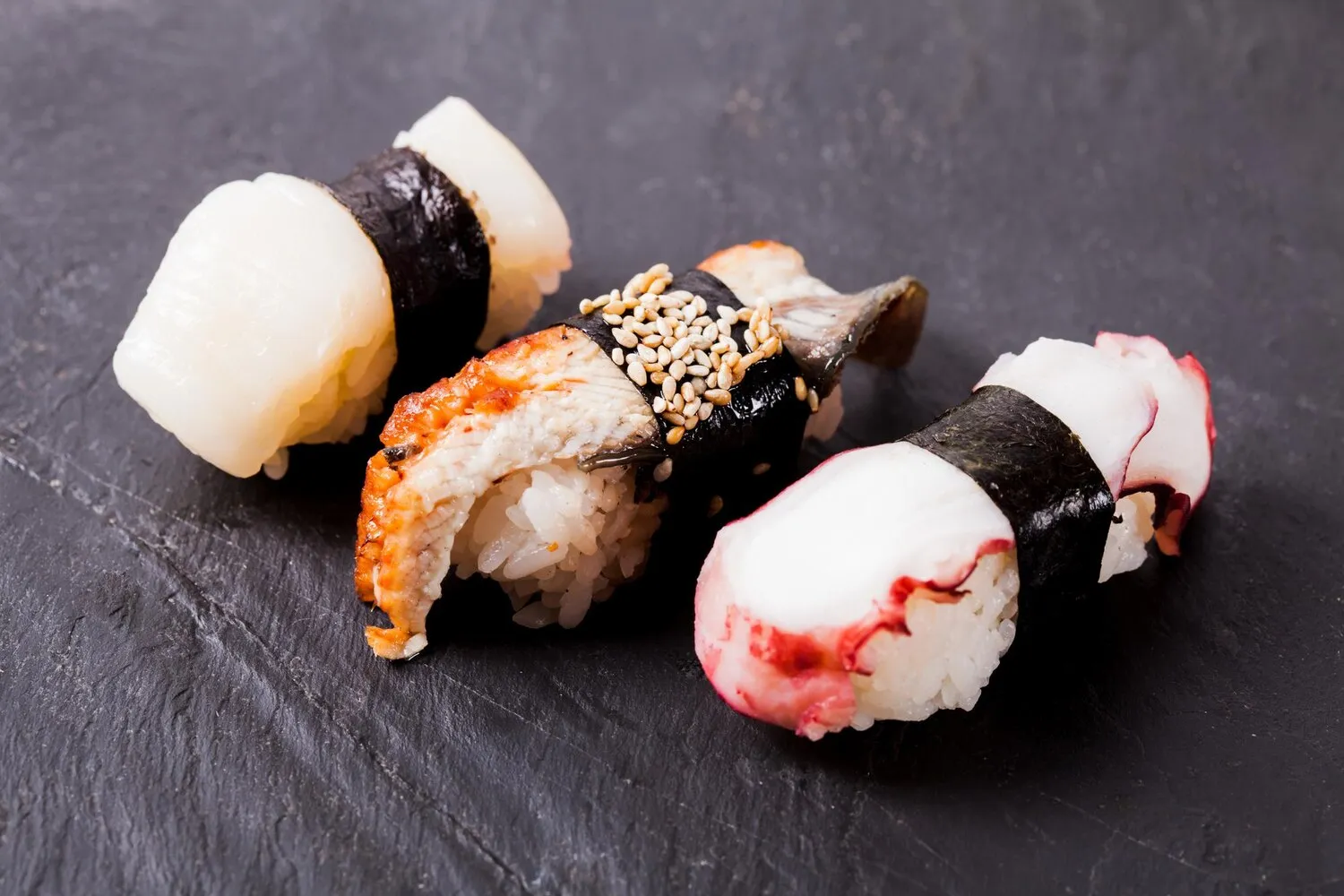
Nigiri
Nigiri is offered
Nutrition Facts
* The % Daily Value (DV) tells you how much a nutrient in a serving of food contributes to a daily diet. 2,000 calories a day is used for general nutrition advice.
Nigiri sushi's origins can be traced back to the Edo period (1603-1868) in Japan. Before refrigeration, fish was preserved through fermentation. Early forms of sushi, like narezushi, involved fermenting fish with rice. As time progressed, methods evolved to shorten the fermentation process, ultimately leading to haya-zushi, which utilized cooked rice mixed with vinegar. Hanaya Yohei is credited with popularizing the modern style of nigiri sushi in the early 19th century, serving fresh fish atop hand-formed vinegared rice.
Nigiri sushi is deeply embedded in Japanese culture, representing artistry, precision, and respect for ingredients. It's a symbol of culinary excellence and is often associated with special occasions and celebrations.
Respect for the Chef (Itamae)
The sushi chef, or Itamae, is highly respected for their skill in selecting, preparing, and presenting the sushi. Their expertise in fish handling and knowledge of seasonal ingredients is crucial.
Etiquette
There are specific etiquette guidelines for eating nigiri, such as using chopsticks or fingers to pick up the sushi, dipping only the fish side in soy sauce, and eating the nigiri in one or two bites.
Seasonality (Shun)
The concept of 'shun,' or seasonality, is paramount in Japanese cuisine. Nigiri is often prepared with fish that are at their peak flavor and quality during a particular season.
Presentation
The aesthetic presentation of nigiri is highly valued. The arrangement of the sushi on the plate, the colors of the fish, and the garnishes are all carefully considered to create a visually appealing and harmonious experience.
Nigiri offers a delicate balance of flavors, primarily highlighting the natural taste of the fish combined with the subtly sweet and tangy vinegared rice. Umami plays a significant role, derived from the fish and often enhanced by soy sauce.
The main flavor components include: the fresh, clean taste of the fish (ranging from rich and fatty tuna to delicate white fish); the slightly sweet and acidic taste of the vinegared rice (made with rice vinegar, sugar, and salt); the sharp, pungent flavor of wasabi (often a small dab placed between the fish and rice); the salty and umami-rich taste of soy sauce (used sparingly as a dipping sauce); and the refreshing palate cleanser of pickled ginger (gari).
Start with Lighter Flavors
Begin with milder, white-fleshed fish before moving on to richer, fattier options like tuna or salmon. This allows you to better appreciate the subtle flavors of each fish.
Use Soy Sauce Sparingly
Dip only the fish side of the nigiri into the soy sauce. Over-soaking can overpower the delicate flavor of the fish.
Eat Ginger Between Pieces
The pickled ginger (gari) is meant to cleanse your palate between different types of nigiri, allowing you to fully appreciate the flavor of each piece.
Eat it Upside Down (Sometimes)
Some suggest placing the fish side down on your tongue to fully experience the texture and flavor of the fish first. This isn't strictly required, but some sushi connoisseurs prefer it.
Trust the Chef
If you're unsure what to order, ask the chef for their recommendations. They will likely suggest the freshest and best-quality fish available.
Explore additional Nigiri dishes and restaurants
Explore NigiriDiscover top dining spots and culinary experiences in Liège.
Explore LiègeLearn more about the food culture, restaurant scene, and culinary heritage of Belgium.
Explore Belgium